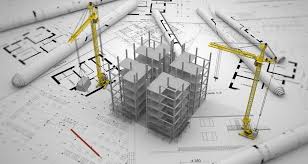
Blueprint Scanning vs. CAD: What’s the Difference
Are you tired of traditional blueprint methods that slow down your project progress and waste your valuable time? In today’s fast-paced world, using outdated methods can put you at a disadvantage. Thankfully, technological advancements have paved the way for more efficient ways of creating and managing blueprints. Two popular methods are Blueprint Scanning and CAD (Computer-Aided Design). In this article, we’ll dive into the differences between these two methods and help you determine which one is right for you.
Table of Contents
- Introduction
- What is Blueprint Scanning?
- What is CAD?
- Comparison between Blueprint Scanning and CAD
- Cost
- Speed
- Accuracy
- Flexibility
- Usability
- Which method is right for you?
- Conclusion
- FAQs
Introduction
As the construction industry continues to evolve, so does the need for more efficient methods of creating and managing blueprints. Blueprint scanning and CAD are two popular methods that can help you get the job done faster and with greater accuracy. Whether you’re a seasoned professional or just starting out, it’s important to know the differences between these two methods and which one is right for you.
What is Blueprint Scanning?
Blueprint scanning, also known as large format scanning, is the process of digitizing physical blueprints and converting them into digital files. This process involves using high-tech scanners that can capture even the smallest details of a blueprint. Once scanned, the digital files can be easily stored, shared, and modified as needed.
What is CAD?
CAD, or Computer-Aided Design, is a software-based method of creating and managing blueprints. CAD software allows users to create and modify blueprints in a digital environment, eliminating the need for physical blueprints altogether. This method is widely used in the architecture, engineering, and construction industries.
Comparison between Blueprint Scanning and CAD
Cost
Blueprint scanning can be more cost-effective than CAD in certain situations. If you only need a few blueprints scanned, it may be more cost-effective to use a scanning service. However, if you need to create a large number of blueprints you can call Scan N More, or CAD may be more cost-effective in the long run.
Speed
Blueprint scanning can be a faster method than CAD for digitizing existing blueprints. The process of scanning a blueprint can take just a few minutes while creating a blueprint from scratch using CAD can take much longer.
Accuracy
Both blueprint scanning and CAD can produce accurate blueprints, but CAD is generally considered more accurate. CAD software allows for precise measurements and modifications, making it a preferred method for architects and engineers.
Flexibility
Blueprint scanning is more flexible than CAD in certain situations. If you have existing physical blueprints that need to be digitized, blueprint scanning is the way to go. However, if you need to make changes to a blueprint, CAD allows for greater flexibility and ease of use.
Usability
CAD is a more user-friendly method than blueprint scanning. While both methods require some level of technical skill, CAD software is generally more intuitive and easier to learn.
Which method is right for you?
The method that’s right for you depends on your specific needs and situation. If you only need to digitize a few existing blueprints, blueprint scanning may be the way to go. However, if you need to create and manage a large number of blueprints, CAD may be more cost-effective in the long run. Ultimately, it’s up to you to determine which method is best for your needs.
Conclusion
Blueprint scanning and CAD are two popular methods for creating and managing blueprints. While both have their advantages and disadvantages, the method that’s right for you depends
Share This Post
More To Explore

Protecting Health Care Data: Security Best Practices
Enhance your health care data security with our proven best practices and practical tips to safeguard sensitive information effectively.

Network Document Scanning: Streamline Your Workflow
Streamline workflow with network document scanning. Discover efficiency, reduce paper clutter, and enhance productivity with top scanning solutions.
Do You Need Help with your next scanning project?
Scan N More can Help Let's Get in touch
